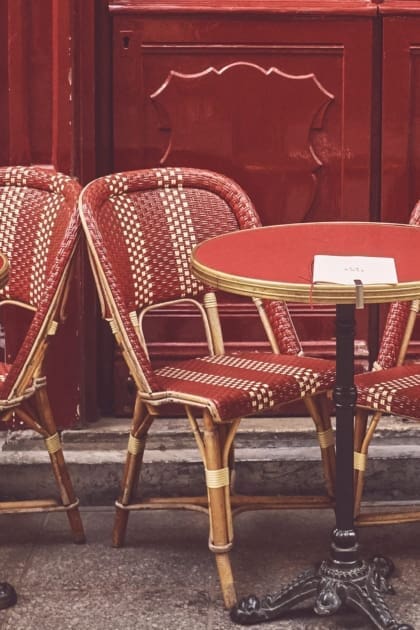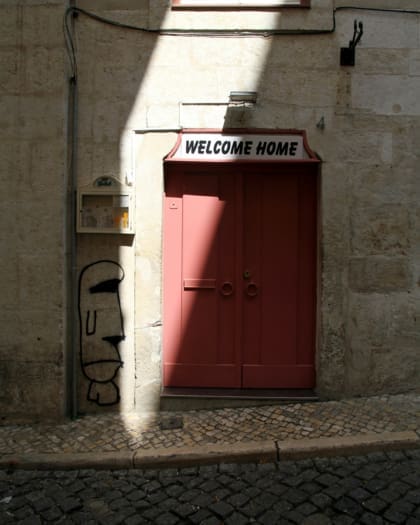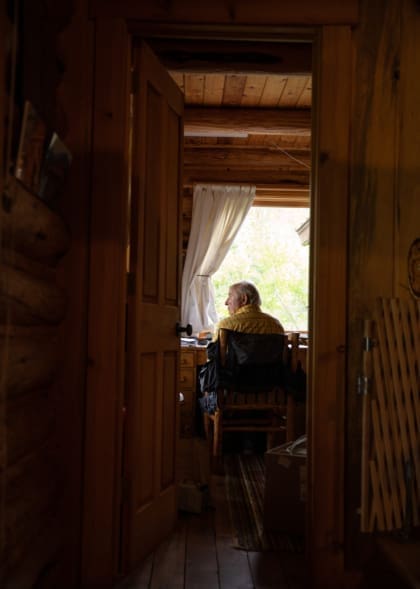
Has the internet killed the hidden gem?
They’re the discerning traveller’s holy grail. But are ‘hidden gems’ a thing of the pre-internet past, or can you still strike holiday gold off-grid?
I know how it goes in your head, because it’s exactly the same in mine.
You’re on holiday. You’re hungry. You take a leisurely evening stroll, and stumble across an adorable candlelit bistro, tucked away down a side street seemingly invisible to other tourists. It’s buzzy, but you immediately get a table. The food is phenomenal, the portions lavish, the prices just the right side of bargain. The service is warm yet efficient and the views from the roof terrace (of course there’s a roof terrace) are breathtaking. At some point you are serenaded by a charming local musician, who does not overstay their welcome and will not attempt an Ed Sheeran cover.
You leave in a flurry of kisses from the owner and promise to come back again soon. And you congratulate yourselves heartily, gazing up at the stars, for you have done it. You’ve actually done it. You’ve found a hidden gem.
Back in the real world, things go a little differently.
“Let’s just be spontaneous!” you say. “Let’s see where the wind takes us!” But then the wind takes you around 15 different restaurants, none of which meet your spurious list of mental criteria (what do you mean, no roof terrace?) or have space for you and your whims. Finally you end up, tired and hangry, scowling over laminated picture menus in a restaurant so nondescript it hurts. You are a cautionary tale for other tourists to see on their way to claiming their meticulously researched tables, thinking: ‘there but for the grace of Google go I.’
At some point you are serenaded by a charming local musician, who does not overstay their welcome and will not attempt an Ed Sheeran cover
Does the ‘hidden gem’ still exist, or has the internet killed it, now that no street art, flea market or lavender field goes undocumented, and barely a pavement hot dog can escape without being rated and starred by diligent hoards? If there’s a place to be ‘discovered’, we can assume several thousand other people will have discovered it before us. And if nobody has, well, isn’t that usually for a reason?
“The hidden gem isn’t stone-dead, but definitely a bit zombiefied,” confirms The Sunday Times restaurant critic Marina O’Loughlin. “I used to complain that no matter how off-piste I went – Sichuan ‘burgers’ in Flushing malls, ‘ancestor’ restaurants in Seoul – Anthony Bourdain would always have been there first. These days, it’s an Instagrammer often more interested in scoring likes than actually eating.”
And as modern hospitality businesses know all too well, if you ’gram it, they will come. Research by easyJet in 2019 found that more than half of 18 to 65-year-olds have chosen holiday destinations based purely on things they’ve seen on social media, while 32% say photogenic appeal is their biggest motivation when planning a trip. And with an Ipsos MORI and TripAdvisor survey finding that 72% of travellers now check online reviews before deciding where to stay, eat or go, it seems most of us would rather be mildly disappointed by an over-hyped hotspot than take a leap into the great unknown.
Travel editor and TikToker Emma Cooke is keen to defend social media’s role as a modern-day concierge. “Before the internet, I had some really bad holidays,” she says, recalling a group trip to Florence in the days before data roaming. “We ended up in tourist trap after tourist trap because we didn’t know where any good places were. We’d get hungry, walk into somewhere that looked nice enough, and end up being handed moist, flaccid sandwiches for €15 each.”
But what we’ve gained in good paninis, we pay for in perfection anxiety. The stakes are higher, and the fear of disappointment can be enough to make an average experience feel like an abject failure. “I do feel intense pressure to have perfect holidays,” admits Cooke. “I spend hours researching and trawling through Instagram trying to gauge which places are the most beautiful, delicious or magical. It’s exhausting.”

Perhaps it’s no wonder, then, that the trope of ‘stumbling across a hidden gem’ still holds such allure. It’s the antidote to all that pressure. The element of authenticity our regimented, triple-verified itineraries are missing. No homework, no spreadsheets, no plotting out every option on Google Maps or meticulous booking of tickets and tables weeks in advance – just follow your nose and trust your instincts.
Of course, it helps to hone those instincts first. My attempts at holiday freewheeling have led me on nature hikes down soulless dual carriageways, into spas that weren’t actually spas, and once, memorably, into a Mallorcan ‘living museum’ that turned out just to be someone’s front room. If contemporary travel is a hunt for Diagon Alley, there’s a knack to tapping on the right bricks.
“After years of travelling to eat, I’ve developed a kind of Spidey sense about a place just from its general vibe,” says O’Loughlin. “It could be as small a thing as the sign writing, or a peek into the kitchen, or the fact that the restaurant has been in the same family for decades.” She recommends choosing restaurants that don’t have stunning views (less likely to rest on their laurels) and avoiding anywhere with a tout or a picture menu “like the plague” (unless you’re in Japan). Her best-ever find? Communal dining on a goat and pig farm, up a mountain in Provence. “The whole place was rugged and untouched, perfumed with wild herbs. The farmer played the mouth harp by way of entertainment. We loved it so much, we missed our plane home.”
Tips for finding a hidden gem can be downright cynical: 'look for Aēsop shops. They put them where the good stuff is’
The irony isn’t lost on me that when I ask for gem-seeking tips on Twitter, nearly everyone writes ‘ask for tips on Twitter’. But I learn a few new analogue methods too – from the judgemental (‘look for people who are properly engaged with their dining companion, not on their phone while eating’) to the sentimental (‘in Europe, look for places people take their grandparents’) to the downright cynical (‘look for Aēsop shops. They put them where the good stuff is’).
Proximity to 30 GBP hand cream aside, most seasoned travellers will tell you that asking locals – especially those with an aura or haircut that suggests they might ‘get’ your ‘vibe’ – is the best way to strike gold, whether it’s a niche attraction (Tallinn’s marzipan museum, anyone?) or a municipal leisure centre with a better pool than the luxury hotel next door. “Review culture is good and worthwhile, but really nothing beats making actual human connections,” says Cooke.
One person tells me the best recommendations come from pharmacists (because they know where has salmonella?) while many more swear by asking bartenders, baristas and hotel receptionists where they go to have a good time. Although of course, there’s no accounting for taste. “I’ve stopped the old cliché of asking taxi drivers, after some truly awful recommendations,” says O’Loughlin, “including a place in the Florida Keys that should have had Hayseed Dixie’s ‘Duelling Banjos’ as the soundtrack.”

Sometimes the secret isn’t boycotting the most popular places but choosing the savviest time to go. Swap sunsets for sunrises to see the best vistas minus the forest of selfie sticks. Book museums for first thing on Monday mornings, and get comfortable with the idea of having that must-eat ice cream for breakfast. I once went to Stockholm’s renowned Fotografiska gallery at midnight, on a whim, and was rewarded with the whole place to myself.
And ignorance can be bliss. On the last night of a trip to Tel Aviv just before the pandemic, my friends and I found ourselves in full tourist chump mode: wandering the streets, necks cricked over our phones, trying to find a place that looked equal parts delicious, affordable and open. On our fifth failed attempt to get a table at a top-rated hotspot, we asked the doorman where he would go. He directed us around the corner to an unmarked door in a sketchy-looking building. The door opened onto a surprise cobbled courtyard, surrounded by fairylit balconies – and at the top of a winding staircase, nirvana. The food was phenomenal, the portions lavish, the prices just the right side of bargain. The service was warm yet efficient and the lack of roof terrace a small price to pay for a complete absence of ‘Thinking Out Loud’ played on the zither.
A quick Google would have revealed our hidden gem to be Romano, yet another top-rated hotspot with brown paper tablecloths and highly photogenic roast cauliflower – but to us, oblivious, it felt like a moment of beautiful serendipity. And we would never have ‘stumbled across’ it on our own.
So what’s the moral of our story? Well, there’s no shame in planning. Sometimes the beaten path is there for a reason, and that reason is to stop you wandering through an industrial estate or paying 20 GBP for a microwaved burrito. But sometimes, it pays to put your phone away and make human contact. After all, if you don’t ask, you don’t get.
Subscribe to the ROADBOOK newsletter for compelling long-reads on the future of the travel and superlative city guide inspiration








